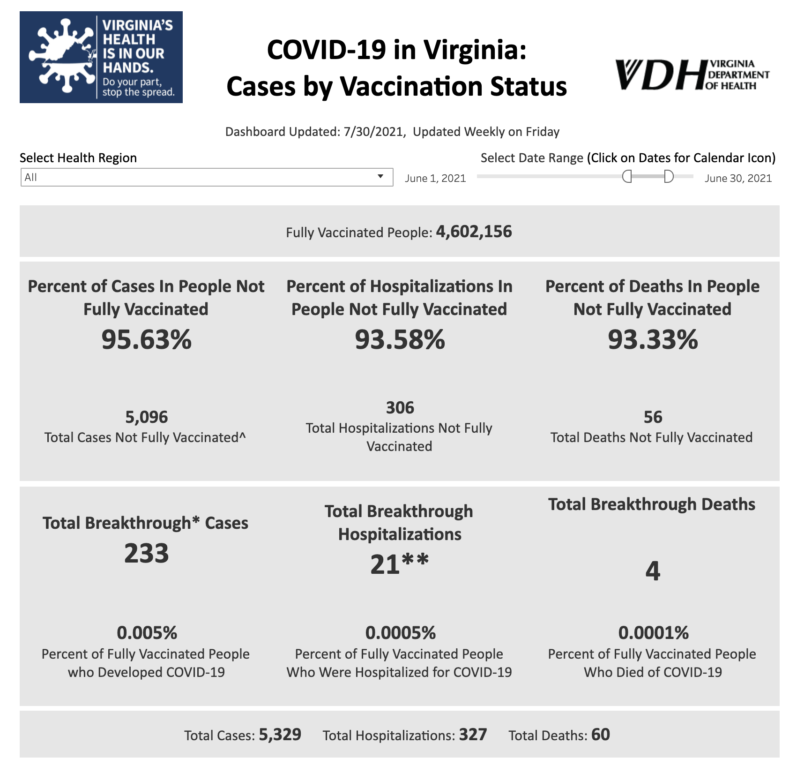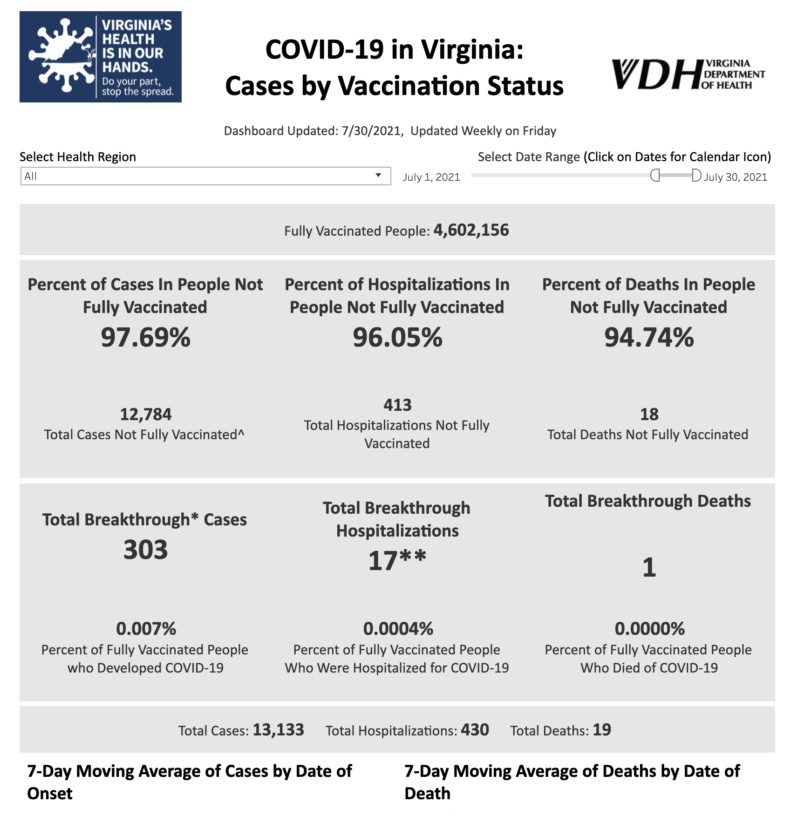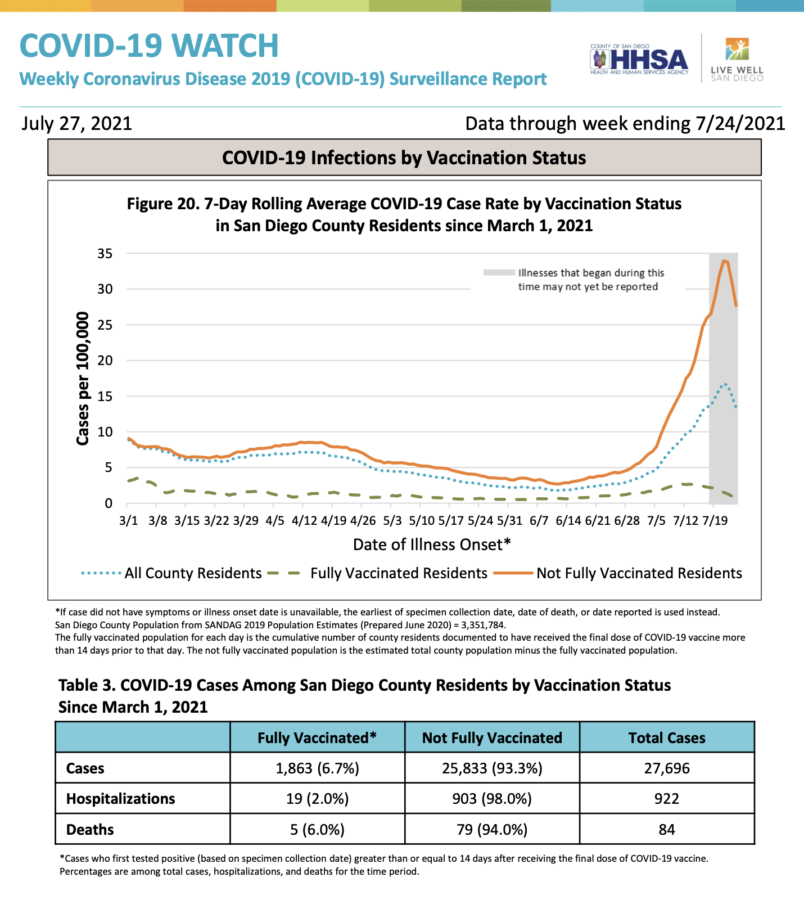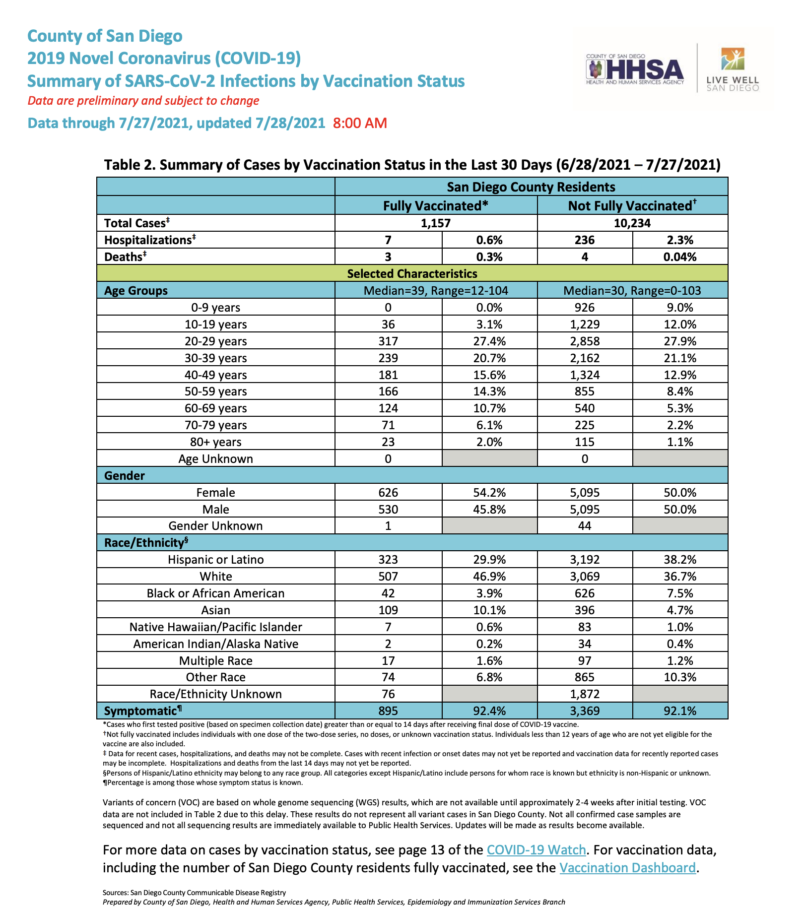Over the course of July our long foretold ‘hot vax summer’ has either come to a screeching halt or at least hit a major speed bump. We’re in the midst of another wave of new cases if not, at least in most of the country, hospitalizations and deaths. The Delta variant has changed things. It’s significantly more infectious and to at least some extent it’s weakened the efficacy of the best vaccines. But just how much? And how much does that matter? There’s a fairly spirited debate about what we should even consider an infection (we’ll come back to this). On really every front we’re flooded with anecdotal information.
We have the July 4th outbreak in Provincetown, Massachusetts that was at least partially the basis of shifted CDC guidelines. But that case seems to have been at least partly rooted in a unique set of behavioral factors that are not totally applicable to most indoor group activities. We’re all hearing about breakthrough infections in our own extended social circles and there are clearly more of them than many of us would have expected or at least hoped. Just yesterday we put a face to this when we learned that Sen. Lindsey Graham (R-SC), fully vaccinated 66 year old, has a breakthrough case, though one that is apparently manageable. And finally there are numerous reports of spikes in infections of children – all of whom under 12 are currently ineligible for vaccination.
Through all of this, however, the information we have is mostly anecdotal – or at least not the product of focused statistical analysis. Much of this is due to the fact that we’re trying to make sense of a reality that is only several weeks old. So systematic investigations are scarce. I was telling my wife the other day that it’s very hard to get a sense of what the situation is reading the headlines. But if you’ve dug deep into the details – as I have – it’s at least as confusing. Public health authorities in Israel have been saying for a few weeks that the efficacy of the Pfizer vaccine is down to 40%. That’s wildly lower than any data out of the US and even many Israeli public health experts say the data is flawed. We have limited data, contradictory data, a rush of anecdotal reports and all of this amplified through press reports that are often innumerate or misleading.
We’re in the midst of a liminal period in which some core facts about COVID and the vaccines are suddenly up for grabs. Some of that is bad communications, innumeracy and hysteria. But not all of it.
I want to share some data I’ve found instructive. There are two jurisdictions in the United States that are publishing easily accessible COVID data broken down by vaccination status. I’m sure there are others. These are just the ones I’m aware of. (Please contact me if you can point me to others.) Those are Virginia and San Diego County, California.
Here are a few charts.
For Virginia in June

For Virginia in July

For San Diego From March 1st through July 24th

For San Diego County for (roughly) July

It’s important to note that these charts are made from raw data and they are dependent on how testing is being conducted in these jurisdictions. They’re not studies which aim to determine the level of vaccine efficacy. They’re just breakdowns of the lab confirmed cases in that jurisdiction during a given time period. LA County announced a week ago that in June 20% of cases were among fully vaccinated people. That’s substantially higher than Virginia and San Diego are reporting. But LA County doesn’t have a dashboard of this data, just one-off announcements. Is there some reason for the difference? It could simply be how testing is being done in the county, perhaps more aggressive surveillance testing. Who knows?
Meanwhile, it’s possible we’re overstating the role of the Delta variant in all of this. There’s little question that Delta is more contagious. This is borne out by data on spread and clinical data on the volume of infectious material shed by people with active infections. There are anecdotal suggestions that Delta is either more virulent in general or in children. But it’s possible that part of what we’re blaming on Delta is simply the effect of the rapid reduction in mitigation starting in late Spring. Farzad Mostashari is one of the public health experts I follow. And he makes the point here that the rapid spread of Respiratory Syncitial Virus (RSV) beginning in April suggests that the parallel uptick in COVID is heavily driven by behavior. It’s not just Delta.
People’s feelings about mitigation are so inflamed at the moment that I need to make one point clear. This doesn’t mean we were wrong to reduce mitigation in the Spring or that we should go back now. It’s simply a point about understanding what role Delta is playing in the new reality of late summer.
The information I’ve shared here doesn’t settle any questions. But like a pilot in cloudy weather, concrete data can be like an instrument panel that helps us from going off course or worse. If you’ve found other jurisdictions publishing accessible data broken down by vaccination status please let me know.







